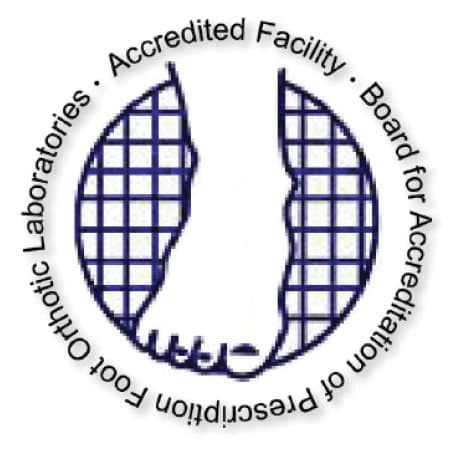The terms drop foot and foot drop, which can be used interchangeably, are used to refer to a particular gait abnormality wherein the dropping of the forefoot is caused by a weakness, some damage or injury to the peroneal nerve, or paralysis of the muscles of the lower leg’s anterior portion. It is not considered a disease in itself but a symptom of an underlying greater problem.
Characterized by the patient’s specific inability or general difficulty in moving the ankle as well as the toes upward (also technically referred to as dorsiflexion), the foot drop’s severity or degree can range from being a temporary condition or a permanent one, both largely depending on the extent of the weakness of the muscle or the paralysis.
The drop foot or foot drop condition can occur either bilaterally or unilaterally.
In a normal walking gait cycle, a person will have his toes pulled up from the floor so he does not trip on them. The toes of a drop foot patient tend to point down and strike the floor first, while the ankle flaps as the foot is moved. They will eventually develop a marching gait or a steppage as they raise their thigh when walking in a motion likened to one climbing the stairs.
Drop Foot: What Causes It?
Drop foot may follow after a direct injury to the dorsiflexors. There have been many reports of rupture of the anterior tendon of the tibialis that normally leads to drop foot and a possibility for peroneal nerve palsy. This rupture of the subcutaneous tendon normally occurs after some trauma with the foot placed in plantar flexion.
Drop foot may also result from compartment syndromes. These are surgical emergencies and are not linked only with acute trauma or fracture. One form of anterior compartment syndrome, March gangrene is believed to be caused by edema and minor hemorrhages. Anterior compartment muscles usually occur after a strenuous activity among those who are not very used to it. The condition can also result from deep posterior compartment syndrome do to a contracture fracture.
Mononeuropathies of the common peroneal, deep peroneal, and sciatic nerves are some of the neurologic causes of drop foot. Drop foot can also manifest with subcortical cerebral or parasagittal cortical lesions, motor neuron disease, lumbar radiculopathy, and lumbosacral plexopathy. Electrodiagnostic examinations and clinical tests help differentiate these lesions.
The habitual crossing of the legs is a common behavioral cause for drop foot, although such cases can be easily resolved by doing away with the habit. Finally, the drop foot condition can be the result of the combination of anatomic, muscular, and neurological dysfunction.
Drop Foot: How Is It Diagnosed?
The drop foot condition is normally diagnosed after a physical examination is conducted. Your physician would want to see you walk and check your leg muscles for any weaknesses. He will check out for any signs of numbness on the top of your foot and toes and on your shin. In other cases, additional test will be required.
Imaging Examinations
Because drop foot can also be caused by a tumor or cyst pressing on the spine or knee or the abnormal overgrowth of bone in the spinal canal, imaging tests offer a lot of help to address these problems.
- Plain X-ray scans that use low-level radiation are used to visualize bone lesions or soft tissue masses that may be causing the symptoms.
- With technology that makes use of sound waves to produce images of the body’s internal organs and structures, an ultrasound examination is helpful when checking for tumors or cysts that may be pressing the nerves.
- A CT scan or computerized tomography examination is able to create cross-sectional views of the various internal organs and structures of the body with the combination of X-ray images that have been taken from various angles.
- An MRI or the magnetic resonance imaging test makes use of a strong magnetic field as well as radio waves to create detailed images and is particularly useful in visualizing those soft tissue lesions that may be pressing a nerve.
Nerve Tests and Examinations
EMG or electromyography and other nerve conduction studies evaluate electrical activity in the nerves and muscles. Although uncomfortable and inconvenient, these tests prove to be helpful in determining the exact locations of damages and injuries along affected nerves.
Drop Foot: How Is It Treated?
Other than exercise, clinicians have discovered and created several options for the treatment of drop foot. There is a good blend of old and new treatments for the condition, according to the chief of the department of physical medicine and rehabilitation Dr. Moshe Lewis of the California Pacific Medical Center. Relatively new on the scene, nerve medications are used to lessen pain and enhance nerve function without the usual peripheral swelling. The same holds true for topical pain medications, although Dr. Lewis recommends the wise use of these medications.
Physical therapist Dr. Angela Levy from Baltimore’s Specialty Hospital at Levindale notes that ankle-foot orthotics are considered the gold standard when it comes to physical therapy treatment for the condition. The AFO is inserted in the shoe to hold the foot and put it in proper position while keeping the ankle and toes raised. This method is popular for its reduction of risks of falls and for immobilizing the ankle.
Physical therapy and AFO’s are two of the three main treatment methodologies used for drop foot; the third is electrical stimulation. Directly stimulating the anterior tibialis muscle is the primary objective of NMES or neuromuscular electrical stimulation where the nerves are fired, causing the contraction of the muscles. Eventually, the leg muscles will be retrained.
Alternative Treatments for Drop Foot
Patterned electrical neuromuscular stimulation is one alternative that National Rehabilitation Hospital therapists use. This electrical stimulation unit is the product of a series of research and studies of EMG for normal movement patterns. Electrical stimulation from the unit imitates these patterns with the objective of regaining normalcy.
Physical therapists at the National Rehabilitation Hospital as well as the WellStar Kennestone Outpatient also make use of an innovative tool for treating drop foot: the neuroprosthesis.
A neuroprosthesis is a device that is composed of three pieces: a cuff that is strapped just below the knee to have the peroneal nerve stimulated, an insert in the heel of the shoe to stimulate the nerves of the ankle and foot during the gait cycle, and the controller.
All three parts of the neuroprosthesis communicate with each other wirelessly. The device helps facilitate the re-education of the muscles as well as improve how patients walk. Drop foot patients can use the device while performing their daily functions as it can well adapt to changes to the terrain and the patient’s walking speed.
However, because the device is expensive, it is only for clinical use and patients are not able to use it at home. Dr. Emily Lanham, WellStar KenneStone Outpatient’s day treatment physical therapist, acknowledges that the neuroprosthesis is an excellent tool but still considers prioritizing other things that will help patients get better.
Conclusion
All of the available treatment modalities for drop foot are simply tools for the improvement of the patient’s mobility. Depending on the underlying cause of the condition, drop foot may or may not be cured. Drop foot cases caused by nerve damage or trauma have bigger potential for partial, or in most cases, complete recovery. Cases that have been caused by neurological disorders however will not be cured. Rather, the drop foot condition will be a lifelong symptom that patients will have to learn to adjust to and manage through exercise and the use of appropriate modalities.




